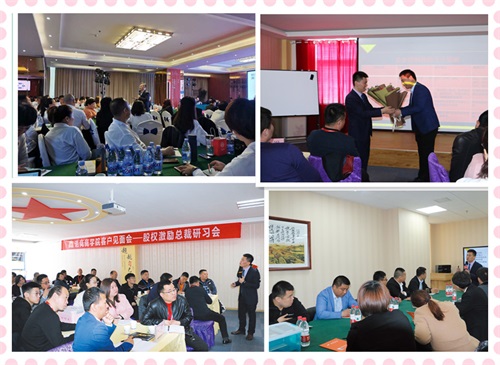歸納起來(lái),,
山東股權(quán)設(shè)計(jì)架構(gòu)有兩個(gè)主題,,一個(gè)是控制,,另個(gè)是利益。所以,,它不是簡(jiǎn)單地指公司章程中列明的出資人及其持股比例明細(xì),,而是在此基礎(chǔ)上,在公司治理層面通過(guò)設(shè)定股東會(huì)和董事會(huì)的控制范圍,、表決權(quán)和分紅權(quán)的約定,、控制權(quán)的擴(kuò)張和限制等事項(xiàng),,一方面保障股東權(quán)益,,另方面建立穩(wěn)定的控制權(quán),并在這兩方面通過(guò)一系列規(guī)則建立起一套股東權(quán)利結(jié)構(gòu)的體系,。這也是全部股權(quán)架構(gòu)設(shè)計(jì)工作的核心,。
In summary, there are two themes in the equity design structure of Shandong, one is control, and the other is interests. So, it does not simply refer to the details of the investors and their shareholding ratios listed in the company's articles of association, but rather, on this basis, at the level of corporate governance, by setting the control scope of the shareholders' meeting and the board of directors, the agreement on voting and dividend rights, the expansion and limitation of control rights, and other matters, on the one hand, to protect shareholders' rights and interests, and on the other hand, to establish stable control rights, And establish a system of shareholder rights structure through a series of rules in these two aspects. This is also the core of all equity structure design work.
(1)股東會(huì)和董事會(huì)的控制
(1) Control of Shareholders' Meeting and Board of Directors
這是公司治理的核心,。控制了股東會(huì),,就控制了董事會(huì),,控制了董事會(huì),就控制了公司的日常運(yùn)營(yíng),。股權(quán)架構(gòu)設(shè)計(jì)時(shí)很大一部分精力是圍繞“兩會(huì)”設(shè)計(jì)相關(guān)規(guī)則的,。關(guān)于“兩會(huì)”的權(quán)限范圍,,《公司法》第37條和第46條對(duì)有限公司股東會(huì)和董事會(huì)的權(quán)利范圍做了列舉式規(guī)定,,在每個(gè)條文的后項(xiàng)都做了授權(quán)式規(guī)定“公司章程規(guī)定的其他職權(quán)”。這表明,,只要不違背《公司法》
This is the core of corporate governance. If you control the shareholders' meeting, you control the board of directors. If you control the board of directors, you control the daily operations of the company. A large part of the effort in designing the equity structure revolves around designing relevant rules for the "Two Sessions". Regarding the scope of authority of the "Two Meetings", Articles 37 and 46 of the Company Law provide a list of provisions on the scope of rights of the shareholders' meeting and the board of directors of a limited company, and in the latter part of each provision, authorization provisions are made for "other powers stipulated in the company's articles of association". This indicates that as long as it does not violate the Company Law

及其他法律法規(guī)的禁止性規(guī)定,,章程可以自由對(duì)股東會(huì)和董事會(huì)的權(quán)限范圍做出規(guī)定,,只要股東表決同意即可,。創(chuàng)業(yè)公司可以根據(jù)自身實(shí)際情況進(jìn)行個(gè)性化定制,,比如:股東會(huì)批準(zhǔn)的事項(xiàng)范圍,、關(guān)于自主定向分紅的約定、關(guān)于董事會(huì)對(duì)特定金額投資事項(xiàng)的審批權(quán)等,。因此,在設(shè)計(jì)股權(quán)架構(gòu)時(shí),,對(duì)“兩會(huì)”的權(quán)利范圍進(jìn)行詳細(xì)規(guī)定是一項(xiàng)很核心的工作內(nèi)容,。
According to the prohibitive provisions of other laws and regulations, the articles of association can freely stipulate the scope of authority of the shareholders' meeting and the board of directors, as long as the shareholders vote and agree. Entrepreneurship companies can customize according to their actual situation, such as the scope of matters approved by the shareholders' meeting, agreements on self directed dividends, and the approval power of the board of directors for specific investment matters. Therefore, detailed regulations on the scope of rights of the "Two Sessions" are a core task in designing the equity structure.
(2)表決權(quán)和分紅權(quán)的約定
(2) Agreement on voting and dividend rights
現(xiàn)行《公司法》框架下,,股東核心的兩項(xiàng)權(quán)利即表決權(quán)和分紅權(quán),,這兩項(xiàng)權(quán)利可以由股東自行約定比例,,與股東的實(shí)際持股比例可以不一致,。各股東之間應(yīng)尊重彼此的選擇,,只要達(dá)成一致并寫(xiě)人公司章程或者《股東協(xié)議》等法律文件后,,就應(yīng)當(dāng)遵照?qǐng)?zhí)行,。
Under the current framework of the Company Law, the two core rights of shareholders are voting rights and dividend rights. These two rights can be agreed upon by shareholders themselves in proportion and may not be consistent with their actual shareholding ratio. Shareholders should respect each other's choices, and as long as they reach an agreement and write it in legal documents such as the company's articles of association or shareholder agreement, they should comply and implement it.
(3)控制權(quán)的擴(kuò)張和限制
(3) Expansion and Limitation of Control
根據(jù)股權(quán)比例確定的控制權(quán)是一個(gè)固定的數(shù)字,,通常情況下,股東為了達(dá)成某些特殊目的,,會(huì)對(duì)控制權(quán)進(jìn)行限制或擴(kuò)張。此處重述如下:
The control right determined based on the equity ratio is a fixed number, and usually, shareholders will limit or expand the control right in order to achieve certain special purposes. Here, it is restated as follows:
①投票權(quán)委托;
① Authorization of voting rights;
②一致行動(dòng)協(xié)議;
② Agreement on concerted action;
③股權(quán)代持;
③ Equity proxy holding;
④通過(guò)有限合伙持股;
④ Holding shares through limited partnership;
⑤搭建金字塔式股權(quán)架構(gòu);
⑤ Building a pyramid shaped equity structure;
⑥相互交叉持股;
⑥ Cross shareholding;
⑦發(fā)行類別股份(AB股),。
⑦ Issuance of Class Shares (AB Shares).
這七種加強(qiáng)控制權(quán)的方式可以單獨(dú)或組合使用,,都是在股權(quán)比例具體數(shù)字的基礎(chǔ)上結(jié)合使用的。前三種依賴協(xié)議約定進(jìn)行落地,,后四種是通過(guò)實(shí)操進(jìn)行具體執(zhí)行,。還有什么事項(xiàng)就來(lái)我們網(wǎng)站
http://zyvd.cn咨詢吧!
These seven ways of strengthening control can be used individually or in combination, all of which are combined based on specific numbers of equity ratios. The first three rely on protocol agreements for implementation, while the last four are implemented through practical operations. If there are any other matters, please come to our website http://zyvd.cn Consult!



 13698613138
13698613138


